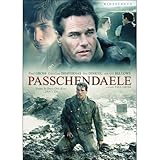 One Flew Over The Cuckoo’s Nest is a classic of American cinema, and Jack Nicholson’s most well-remembered cinematic role. The movie was based on an earlier theatrical production, and upon the the Ken Kesey novel of the same name, One Flew Over the Cuckoo’s Nest, which had been loosely based upon his experiences working as a janitor or orderly in a VA mental hospital in California, where he also volunteered for LSD experiments.
One Flew Over The Cuckoo’s Nest is a classic of American cinema, and Jack Nicholson’s most well-remembered cinematic role. The movie was based on an earlier theatrical production, and upon the the Ken Kesey novel of the same name, One Flew Over the Cuckoo’s Nest, which had been loosely based upon his experiences working as a janitor or orderly in a VA mental hospital in California, where he also volunteered for LSD experiments.
A lesser-known fact is that having been released in 1975, as a cinematic retelling of a story set some 10-20 years earlier, it is an extremely realistic portrayal of what State mental institutions were like until fairly recently, insofar as how the facilities were set up and what the available treatments were.
Nurse Ratched is easily vilified and has become synonymous with representatives of institutionalized cruelty in our age, and McMurphy observes that she likes to “play with a rigged deck”. However, though some of her policies are merely protective of institutional inertia (what can putting the World Series game on the ward’s television hurt?), certain of her actions are an attempt to impose order upon chaos and good habits upon pathology; in many cases, she engaged in such restrictive measures as withholding other patients’ cigarettes in an effort to stem the negative influence upon the other patients on the part of McMurphy, who had started gambling with the other patients and had won much of their existing supply of money and cigarettes. Though the patients possess wishful thinking of winning these items back, if enabled to gamble some more, Ratched holds out no such hopes and is immune to McMurphy’s charisma. She thinks the regimen of the institution, if strictly adhered to, can at least partially “fix” McMurphy and the other patients, but McMurphy’s fellow inmates welcome the excitement and fun McMurphy’s stunts bring into their drab world. In an interview with Dr. Spivey, the chief psychiatrist, Randall Patrick McMurphy admits that the reason he got sent to prison, and subsequently to the mental institution was, “as near as I can figure out, it’s ’cause I, uh, fight and fuck too much”. This movie is as much about the way society deals with such a nonconformist as much as it is about the personal conduct of such an individual himself; as the behind-the-scenes deliberations of the doctors and Nurse Ratched are shown and the workings of the various bureaucracies dealing with McMurphy are put before the audience. The treatment team make the fateful decision to “keep him (McMurphy) on the ward”, rather than exercising the other options available to them of sending McMurphy to another ward with more “disturbed” patients, or, as the head of the hospital wanted, sending him back to the prison work farm, on the grounds that McMurphy wasn’t technically mentally ill, and that therefore he could well be returned to the penal system, rather than remain in the mental health system.
Though the medical and psychiatric knowledge of the time had decided that McMurphy was “not crazy, but he is dangerous”, modern-day audiences view this picture with a different perspective than people did when it was released in the 1970s. These days, folks are likely to ask, upon seeing McMurphy’s provoking manner, if perhaps, he “has ADD”, which, back then, was not considered possible in an adult. Some speculate that he might have been a sociopath. Modern audiences also express shock at what was then a common procedure, and, during the time period referenced by the original book upon which the movie is based, the only game in town, electroshock therapy without anesthesia, which is now banned in the US, being widely considered barbaric and cruel.
At one point when a melee erupts in the ward, and McMurphy and the Chief are among those taken away immediately to get electroshock treatment, ostensibly to calm their agitated, violent states, but actually because it is the prevailing punishment this particular bureaucracy can dispense. While McMurphy and the Chief are sitting on a bench outside the electroshock room, waiting their turn, McMurphy does the chief the small kindness of offering him a stick of gum. Chief thanks McMurphy for the gum, and with surprise, McMurphy notes that the Chief “can talk” and is thus not “deaf and dumb” as he had previously been described by others in the ward. (Chief actually came off more as a catatonic to me). The Chief warns McMurphy about people “working on him” by telling him the tragic story of his own bedevilled and alcoholic father. Nevertheless, McMurphy continues his antics and continues to get himself and others into escalating amounts of trouble.
Though the predominant disability portrayed in this movie is mental illness in various forms and degrees, both by actors and by authentic patients who had roles as “extras”, there is the occasional wheelchair user shown at various times and places in the hospital, and it is not uncommon to see stray manual wheelchairs left unattended, and easily commandeered by the able-bodied. Though the hospital was built well before the ADA became law, and is probably not designed with wheelchair accessibility in mind, the patients’ swimming pool has a concrete ramp on which an older male patient in a wheelchair is gently rolled into the pool, wheelchair and all.
There were no shortage of “acquired disabilties” in the mental institutions of the time: in the past, when electroshock was the predominant form of treatment, and was given in much the same way in real life as it was to Jack Nicholson, it was tacitly acknowledged that some brain damage was part of the deal.
Lobotomies were a common form of treatment in mental institutions in the past, and while dramatic loss of intelligence and personality was not always the direct result of lobotomization, in this movie, an individual who has had a lobotomy is portrayed as a drooling, incontinent zombie, and McMurphy is shown as passive and silent, and no longer “him”, following his lobotomy.

